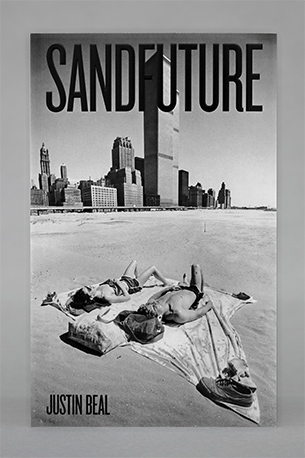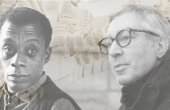The Architect as Tragic Hero

In a 1905 article, “The Architect in Recent Fiction,” editor of The Architectural Record Herbert Croly argues that modern fiction “has recast the character as leading man.” The old image of the architect, Croly writes, like the unctuous insincere Seth Pecksniff in Charles Dickens’ “Martin Chuzzlewit” or the joyless megalomaniac Halvard Solness in Henrik Ibsen’s “Master Builder,” has given way to an emerging class of character that demands a new accounting as a social and professional figure. The following excerpt from Justin Beal’s book “Sandfuture” explores the way in which this literary and cinematic archetype has influenced the cultural role of the modern architect.
The younger of the two men said, “you don’t look like an artist.”
For the next few weeks this comment rattled around in my head. What did an artist look like? What did I look like? The more I thought about it, the more I came to understand how I had always avoided identifying as an artist by hiding behind the figure of the architect, a complicated two-sided image I had constructed from experience and fiction — from professors and friends and characters in novels and films. I did not want to be an architect, but I felt comfortable in the archetype. It was an image that had currency in the art world at the time when I entered it, and I had used that to my advantage.
It was also an easy mask for me to put on, because it is one that is still, to an astonishing degree, almost uniformly white and male and inflected by one sort of privilege or another, which is to say, it was easy for people to look at me and see an architect. If this arrangement included a degree of artifice, it was not insincere.
I had studied architecture. I had worked briefly as an architect. I spoke the language. I was fascinated by what an architect was and was not, and part of the satisfaction of assuming this identity was the knowledge that it was only a mask. A real architect is stuck working in the realm of representation. She does not make buildings; she makes drawings and models and renderings and diagrams of buildings. She relinquishes control at the precise moment that idea becomes form, and I, at least until now, had been steadfast in my commitment to make objects.

There were architects I knew — my mother’s high school boyfriend who gave me a summer job building basswood models, and the kind, lumbering friend of my father who abandoned a career as a lawyer to design houses. There were also the more famous architects, but just like the not-so-famous ones, their personalities seemed predetermined by what everyone else expected of them, by a cultural preconception of their role and by a feedback loop of fact and fiction.
Ayn Rand imagined the uncompromising ethical egoist at the center of “The Fountainhead” as an architect and based Howard Roark on an autobiography Frank Lloyd Wright mostly made up. What better profession for an objectivist than the creative genius who must rely on capitalism for his own self-realization and what better metaphor for that self-realization than a building? “A house can have integrity just like a man,” Roark tells a client, “And just as seldom.”
E. L. Doctorow, knowing a compelling character when he saw one, wrote the real Stanford White — charming, talented, ambitious, entitled — into his historical novel “Ragtime.” White’s very public affair with the teenage showgirl Evelyn Nesbit and his murder at the hand of her jealous husband on the roof of a building of his own design helps anchor the tragic archetype in historical fact.
On the surface they are intelligent, ambitious, attractive, guided by conviction and purpose, but inside they are tortured, full of conflict and shame.
There is Anthony Royal, the vindictive mastermind of J. G. Ballard’s eponymous “High-Rise” and Querry, the disillusioned architect, from Graham Greene’s “A Burnt-Out Case.” Shades of Querry haunt Simon, the beleaguered protagonist of Donald Barthelme’s penultimate novel, “Paradise,” though instead of a leper colony, Simon finds himself in a sort of postmodern purgatory, passing his days in the company of three lingerie models, bemused, cooking elaborate meals and reflecting on his mediocre architectural achievements with a mixture of nostalgia and regret.
Together the stories tangle together into a knot. Architects are creative, but measured; passionate, but ethical; they project a righteous confidence and entitlement inflected with privilege. They are all adulterers. On the surface they are intelligent, ambitious, attractive, guided by conviction and purpose, but inside they are tortured, full of conflict and shame, their good intentions distorted into something monstrous.
Cinema reinforces the architect archetype with a specificity remarkable even in a medium enamored with stock characters — Henry Fonda in “Twelve Angry Men”; Albert Finney in “Two for the Road”; Sam Waterston in “Hannah and Her Sisters”; Donald Sutherland in “Don’t Look Now”; Paul Newman in “Towering Inferno”; Gabriele Ferzetti in “L’Avventura.” The only black architect in a major Hollywood film — Wesley Snipes’ character Flipper Purify in Spike Lee’s “Jungle Fever” — is, as the name suggests, a caricature of assimilation given a profession that signals “whiteness” (as in, nothing could be more white than being an architect).
Like Ibsen’s master builder, these mythological architects are doomed to a tragic arc over which they have no agency. In “Hiroshima Mon Amour,” Eiji Okada plays an architect who has been conscripted into the Japanese army after the bombing of Hiroshima. In “The Fountainhead,” Howard Roark blows up the Cortland Homes to prevent the subversion of his vision. In Peter Greenaway’s film “The Belly of an Architect,” Stourley Kracklite throws himself off the top of the Altare della Patria — ending his life as Halvard Solness did, by falling from a building.
As with White, the truth often helps to reinforce fiction. Gaudí was run down by a streetcar as he looked up at a facade in Barcelona, Carlo Scarpa fell down a flight of stairs in Sendai, Japan, and Louis Kahn died alone in a men’s bathroom in Penn Station, New York.
In chapter seven of “Light Years,” James Salter reduces the character of the architect to its tragic essence with eviscerating precision. Salter’s architect, Viri, “believed in greatness. He believed in it as if it were a virtue. As if it could be his own.” He is insatiable and unfulfilled, but his righteous confidence is never enough to overcome the inevitable disappointment of his unbuilt work — “there always, until the last, like a great ship rotting in the ways.” As the novel draws to close, Viri, breaks down during a production of the “Master Builder.” “It was like an accusation. Suddenly his life, an architect’s life as in the play, seemed exposed. He was ashamed at his smallness, his grayness, his resignation.”
Justin Beal is an artist and a writer based in New York. This article is adapted from his book “Sandfuture.”



